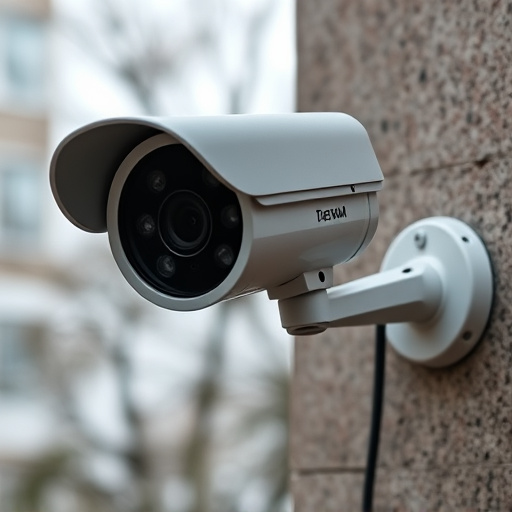Battery-powered fake camera setups offer a flexible, user-friendly way to enhance home and business security with motion detection alerts via smartphone. Strategically placed for 24/7 monitoring, these realistic devices deter intruders while blending into surroundings. However, ethical concerns arise from their deceptive nature, requiring transparency in deployment to respect privacy.
In today’s digital era, enhancing home security has become paramount. One innovative approach gaining traction is the strategic placement of battery-powered fake camera setups. This article delves into the intricacies of setting up these decoy surveillance systems, offering a comprehensive guide. From understanding battery-powered cameras’ basics to choosing optimal locations and exploring visual deceptions, we cover it all. Additionally, we discuss ethical considerations surrounding these devices, ensuring informed decision-making.
- Battery-Powered Cameras: The Basics Unveiled
- Setting Up a Decoy Surveillance System
- Choosing Location for Fake Camera Placement
- Visual Deceptions: Design and Aesthetics
- Ethical Considerations of Fake Security Devices
Battery-Powered Cameras: The Basics Unveiled
Battery-powered cameras have become a popular choice for those looking to set up a fake security monitoring system. These devices offer a simple and flexible solution for enhancing home or business security without the need for complex wiring or professional installation. A basic battery-powered fake camera setup consists of a compact, wireless surveillance camera equipped with rechargeable batteries that can be easily installed in various locations to monitor entry points, back doors, or other areas of concern.
The versatility of these cameras lies in their portability and ease of use. They can be strategically placed indoors or outdoors, providing clear and vivid images day or night. Many models also feature motion detection capabilities, allowing them to send alerts directly to your smartphone when activity is detected, ensuring peace of mind and enabling quick response times. This technology has revolutionized home security by offering an affordable, do-it-yourself solution that doesn’t compromise on quality or performance.
Setting Up a Decoy Surveillance System
Setting up a decoy surveillance system, or battery-powered fake camera setup, can be an effective way to deter potential intruders and enhance your home’s security. These realistic-looking mock cameras are designed to trick would-be thieves, making them believe they’re under constant watch. The process involves strategically placing the devices around your property, ensuring they blend in naturally with your surroundings.
When setting up a battery-powered fake camera, it’s essential to consider factors like placement, angle, and lighting to make them appear as functional cameras. These devices are often wireless and run on rechargeable batteries, offering flexibility in installation. Regularly testing the sensors and simulating real-time footage can further improve the system’s effectiveness as a deterrent.
Choosing Location for Fake Camera Placement
When setting up a battery-powered fake camera, location selection is a strategic step that can greatly impact the effectiveness of your security measures. Opt for areas that offer a clear line of sight across the desired space, whether it’s a residential yard, business premises, or public property. This ensures the camera captures genuine footage without obstructions, allowing for better surveillance and potential deterrent effects.
Consider placement near known points of entry, such as main doors or windows, to simulate an active security system. The fake camera setup should blend seamlessly into its environment, so choosing a location with natural cover like trees or shrubs can help maintain realism. This strategic positioning will create the illusion of enhanced security, potentially discouraging would-be intruders and providing peace of mind for the owner.
Visual Deceptions: Design and Aesthetics
Visual deceptions in the form of battery-powered fake camera setups are an intriguing aspect of modern security. These devices, carefully designed to resemble real cameras, offer an aesthetically pleasing solution for homeowners and businesses alike. The attention to detail in their design is remarkable, from the realistic paint jobs that mimic popular camera brands to the subtle movement sensors that trigger alerts without drawing unnecessary attention.
This innovative approach allows individuals to enhance their security measures without compromising on style or creating an eyesore. Whether placed discreetly in corners or strategically positioned along perimeters, these fake cameras provide a layer of protection while blending seamlessly into their surroundings. Their battery-powered nature ensures flexibility and convenience, as they can be easily relocated or recharged, making them a versatile addition to any security monitoring system.
Ethical Considerations of Fake Security Devices
While battery-powered fake camera setups can serve as an effective deterrent for potential thieves, it’s crucial to navigate the ethical landscape surrounding their use. The very nature of these devices—imitation cameras appearing to monitor a space—can raise concerns about privacy and deception. Homeowners or businesses employing such tactics must consider the impact on neighbors and passersby, ensuring that surveillance is not misconstrued as an all-seeing, constant record of activity.
Transparency is key; clearly communicating the presence of these fake security devices can help mitigate potential ethical dilemmas. It’s important to strike a balance between security measures and respect for personal privacy, especially in public spaces or areas where unintended parties might be captured on what appears to be surveillance footage.
A battery-powered fake camera setup can serve as an effective deterrent against potential intruders, providing a sense of security. By strategically placing these decoy devices, homeowners and businesses can create the illusion of a fully functional surveillance system. However, it’s essential to balance this approach with ethical considerations and choose locations that align with legal boundaries. Responsible use of fake security monitoring devices can enhance safety without infringing on privacy rights, making them a viable option for those seeking creative security solutions.
